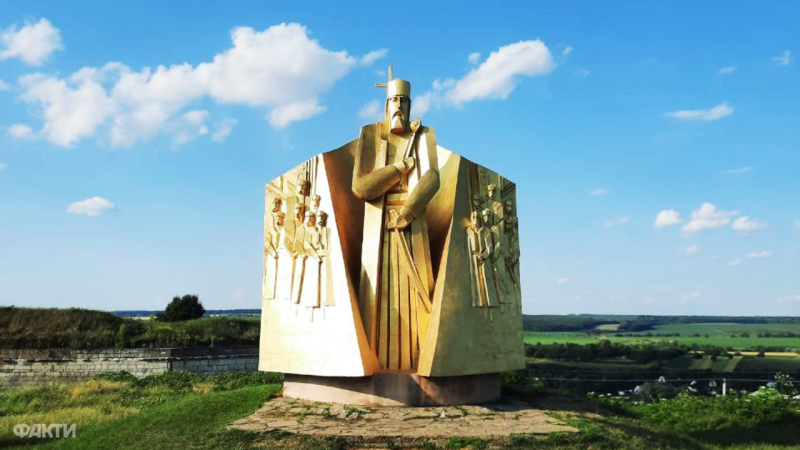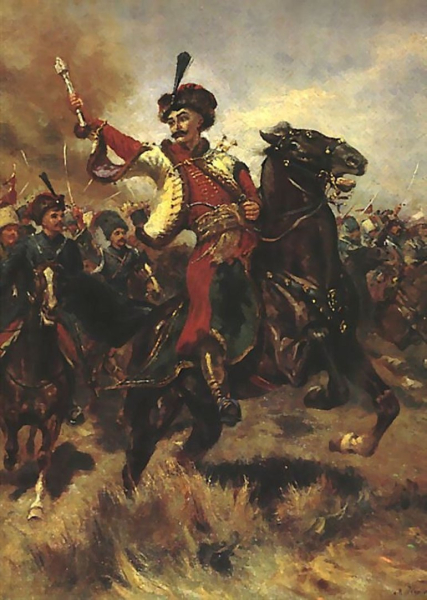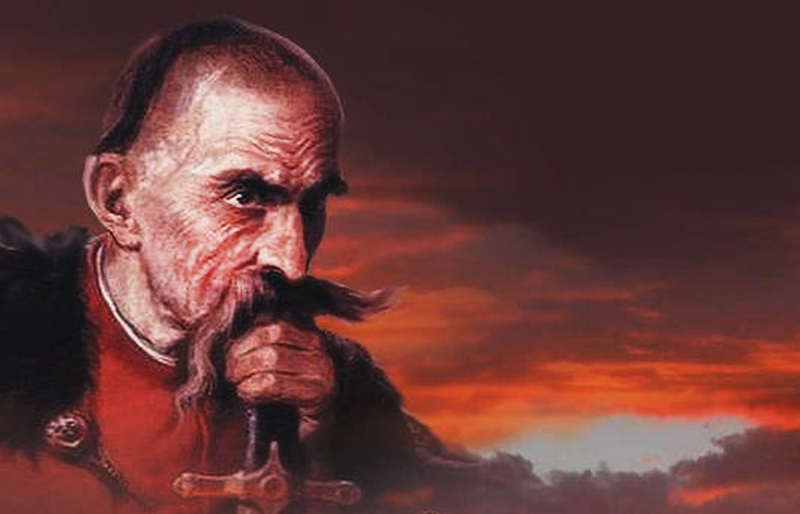< /p>
Starting this year, October 1 is celebrated as one of the most revered holidays in Ukraine — The Protection of the Blessed Virgin Mary. The Ukrainian Cossacks, later the UPA soldiers, and now the defenders of modern Ukraine considered her their patroness.
Previously, these holidays fell on October 14, but with the transition to the new calendar, the Intercession is celebrated on October 1.
The head of the State Service for Ethnopolitics and Freedom of Conscience, Viktor Yelensky, explained that this happened because the day of the Ukrainian Cossacks, the day of the creation of the UPA and the day of Ukrainian defenders are tied to the Intercession, and not vice versa. They will now also be celebrated on October 1.
Now watching
The period of the Ukrainian Cossacks — This is not only a story about campaigns and glorious battles, but also a unique phenomenon in the history of Europe. Cossacks were often called to help by the rulers of different states, their enemies were afraid of them, legends were made up about them, novels were written and sung in songs.
From historical sources it is known that the word Cossack is of Turkic origin . In the first mentions of the 13th century, it meant a guard. In Byzantine sources, Cossacks were described as armed men who provided security or escorted traders.
More and more references to the Cossacks have appeared in documents since the end of the 15th century. The Orthodox archdeacon from Syria Paul of Alepsky in his travel notes described Ukraine as a country of Cossacks. He was especially struck by Kyiv, St. Sophia Cathedral and the Kiev Pechersk Monastery.
— The land of the Cossacks was like a native country for us, and its inhabitants were our good friends and people similar in character to us, he wrote during a visit to Kiev in August 1656.
The French cartographer Guillaume Levassard de Beauplan admired the customs and rights of the Cossack army in Description of Ukraine in 1651. However, historians in the service of the Russian Empire spoke hostilely about the Cossacks. Thus, the German Alexander Rigelman justified the destruction of the Sich by Catherine II, and the Russian historian Ivan Boltin was far from objective and adhered to imperial views regarding the Cossacks.
This is not surprising, because not all Cossacks made deals with Muscovy, some were its ardent opponents and preferred its destruction and have nothing to do with this state.
ICTV facts for the Day Ukrainian Cossacks tell interesting facts about three outstanding personalities of the Cossack period: Hetman Peter Konashevich-Sagaidachny, commander Ivan Bohun and Koshevoy Ataman Ivan Sirko.
Sagaidachny’s sea campaigns and the siege of Moscow
Petr Konashevich-SagaidachnyFirst of all, he is known as a brilliant commander, hetman and ataman of the Zaporozhye Sich, who developed and improved the tactics of naval combat. The Cossacks, under the leadership of the hetman, took the impregnable fortress in Kafa, destroyed the Turkish fleet and freed thousands of prisoners.
Later he led sea campaigns to Sinop, Trebizond and Istanbul. In the Ottoman Empire, the fight against the Cossacks was regarded as the most difficult foreign policy problem. But not only sea voyages were successful. In 1618, his troops, together with Polish-Lithuanian allies, almost burned Moscow to the ground along with the reign of the House of Romanov.
Then the hetman supported the Polish-Lithuanian Commonwealth and the Polish king Vladislav, who wanted to receive the Moscow crown. Sagaidachny was promised, in particular, freedom of the Orthodox faith, an increase in the registered army and recognition of the administrative and judicial autonomy of Ukraine. Together with the Poles, his troops entered the war with Muscovy in 1618.

Monument to Peter Konashevich-Sagaidachny in the city of Khotyn. Photo: Facts ICTV
On the night before Intercession, Moscow was gripped by horror, as the troops of Hetman Sagaidachny stood under its walls and prepared for the decisive assault. On that day, history could have taken a different path, leaving a short memory of the Romanovs.
But the weather got in the way. The Cossacks understood that with winter approaching, Moscow would be difficult to take. In addition, there were not enough forces to successfully complete the siege. Historians point out that the Poles paid the Cossacks poorly and decided not to take risks. Moscow was in a bad position and was forced to negotiate with the Polish-Lithuanian Commonwealth. The result was the conclusion of the Deulin truce. Sagaidachny was against it and openly advocated the capture of Moscow.
Later, Russian propaganda repeatedly manipulated this episode in history, inventing fairy tales for a domestic audience. In particular, they created a narrative that supposedly before the start of the assault, the hetman suddenly changed his mind and declared: I will not burn Orthodox and Christian people. Thus, Moscow priests and regimes more than once manipulated the narrative about the “brotherly people and a single church.”
Bogun was an ardent opponent of Moscow and an outstanding commander
The Cossack was an ardent opponent of the Muscovites Colonel Ivan Bogun. In his speech at the council in Chigirin in 1650, he made a speech that is quoted in the third part of the chronicle of the History of the Rus.
— The most shameful slavery and slavery to the highest degree reigns among the Muscovite people; they have nothing of their own except God’s and the Tsar’s. And people, in their opinion, were created in order to have nothing, but only to be slaves. The nobles and boyars of Moscow themselves are usually called the tsar’s slaves, and in their requests they always write that they beat him with their foreheads, — Bohun said.
In his final speech, he emphasized that “to unite with such an inaccessible people— the same as throwing yourself out of the fire and into the fire.
It is known from history that the regiment led by Bohun did not arrive in Pereyaslav for the council and refused to swear allegiance to the Moscow Tsar. Osip Glukh, Ivan Sirko, Grigory Gulyanitsky, Pyotr Doroshenko, Mikhail Khanenko and several other regiments were also against the agreement. The Zaporozhye Sich did not swear allegiance to the tsar, but there were no decisive protests.
Ivan Bohun was not only an opponent of alliances with Muscovy, he believed that the Hetmanate should not join either Poland or the Ottoman Empire.

Canvas by Nikolai Ivasyuk called Bohun at the Crossing
Despite the tragic and bloody page of Ukrainian history, such as the Battle of Berestechko, it was thanks to Bohun that the Cossacks, being surrounded, turned their camp into an impregnable fortress. The defense continued for several days, after which Bohun decided to withdraw the Cossacks, setting up a crossing across the swamp. Then many Cossacks died, and it was not possible to withdraw most of the artillery. But Bohun was able to withdraw a significant part of the Cossack army.
In 1658, Bohun refused to sign the Gadyach Treaty, which provided for the Hetmanate to join the Polish-Lithuanian Commonwealth. After which, together with Ivan Sirko, in 1659 he led a popular uprising on the Left Bank and Right Bank with the aim of removing Ivan Vygovsky, the initiator of this treaty, from power. The latter asked for help from the Sultan of the Ottoman Empire, but the Cossacks defeated the Tatars and drove Vygovsky out of the Hetmanate.
Sirko often changed his views, but in key agreements he opposed Moscow
Another extraordinary figure in history Cossacks was Ivan Sirko.He organized campaigns, terrifying the Ottoman Empire and Crimea. According to legend, Turkish mothers used to scare their children with his name. Busurmans called the ataman Urus-Shaitan, which meant Satan.
Sirko is perhaps the most mystical figure of the Cossack times; there are many legends and traditions about him. In particular, it is believed that he did not lose a single battle, and there is also a story that the Cossacks did not bury him for five years and took his body on campaigns, which ensured victories. According to another version, they took his right hand on campaigns.

It is known for sure that Sirko often changed his political beliefs throughout his life. There was a period when he fought on the side of the Muscovites, entered into a short alliance with the Tatars, or played along with the Poles.
During the Ruins he was considered a staunch supporter of Muscovy, but very little time passed before he resolutely refused to sign the Pereyaslavskys articles that narrowed the autonomy of Cossack Ukraine.
— Slaves are not allowed into heaven, — an expression attributed to Ivan Sirko.
He also took an anti-Moscow position in the signing of the Andryusov separate treaty between Muscovy and the Polish-Lithuanian Commonwealth in 1667. Another interesting fact about Sirko is that his great-great-granddaughter is the Ukrainian actress Maria Kapnist-Sirko.

